Astilbe flowers are a popular choice for gardeners looking to add color and texture to their landscape. However, it can be frustrating to see those vibrant blooms turn brown and wilted. Fortunately, there are several reasons for astilbe flowers turning brown, and many of them can be easily remedied.
One common cause of browning astilbe is improper watering. Astilbe plants require moist soil that drains well, and they should be watered regularly to prevent the soil from drying out.
If the soil becomes too dry, the flowers may start to wilt and turn brown, starting from the tips of the flowers and continuing downwards. On the other hand, overwatering can also cause problems, as it can lead to root rot and other issues.
Another reason why astilbe flowers may turn brown is exposure to too much direct sunlight. Astilbe plants prefer partial shade, and too much sun can cause the flowers to burn and wilt. If your astilbe is planted in a spot that gets too much sun, consider moving it to a shadier location.
Key Takeaways
- Proper watering is crucial for preventing astilbe flowers from turning brown.
- Astilbe plants prefer partial shade and may turn brown if exposed to too much direct sunlight.
- Regular care and maintenance, including pruning and fertilizing, can help keep astilbe plants healthy and vibrant.
Don’t miss out on these other popular posts in this category:
- Arrowhead Plant Leaves Turning Brown:
- Blue Point Juniper Turning Brown Inside:
- Blue Fescue Grass Turning Brown
Recognizing Astilbe Turning Brown
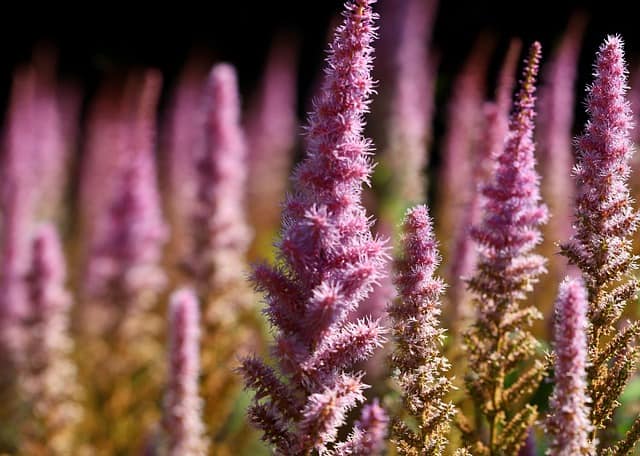
Astilbe is a popular flowering plant known for its beautiful plumes of flowers that bloom in shades of pink, red, and white. However, sometimes astilbe can turn brown, which can be a sign of a problem. In this section, we will discuss how to recognize astilbe turning brown, including the signs of browning astilbe and the common causes of browning.
Signs of Browning Astilbe
Astilbe turning brown can manifest in different ways, depending on the cause. Some signs of browning astilbe include:
- Brown spots on the leaves: Astilbe leaves may develop brown spots that can spread and eventually cause the entire leaf to turn brown.
- Sunken brown spots on the leaves: These spots may be caused by pests or fungal diseases and can cause the leaves to wilt and die.
- Brown plumes: The flowers of astilbe may turn brown and lose their color, which can be an indication of a problem.
Astilbe Flowers Turning Brown – 4 Common Problems
Several factors can cause astilbe to turn brown. Some of the most common causes of browning astilbe include:
- Lack of water: Astilbe requires consistently moist soil, and if the soil dries out, the plant may turn brown.
- Pests: Four-lined plant bugs are a common pest that feeds on astilbe, causing sunken brown spots on the leaves.
- Fungal diseases: Wilt is a fungal disease that can cause sunken brown areas on astilbe stems, mostly near the soil line.
- Heat: Leaf scorch can occur when browning begins on the leaf margins, and it may be a sign of leaf scorch caused by dry, hot conditions.
In conclusion, recognizing astilbe turning brown can help you identify and address any problems with your plants. By understanding the signs of browning astilbe and the common causes of browning, you can take steps to prevent or treat the issue and keep your astilbe looking healthy and beautiful.
Understanding Astilbe’s Growth Requirements
Astilbe is a shade-loving perennial that thrives in partial to full shade. It prefers moist, loamy soil that is rich in organic matter. Astilbe grows best in soil that is consistently moist, but not waterlogged, and has a pH level between 5.5 and 6.5.
In terms of light requirements, astilbe prefers partial shade, but can tolerate full sun in cooler climates as long as the soil is kept consistently moist. Direct sun can cause the leaves to scorch and the flowers to turn brown prematurely. Astilbe can also grow in full shade, but may not produce as many flowers.
Astilbe begins to grow in late spring and blooms in late summer to fall. During the growing season, it requires regular watering to maintain soil moisture. In hotter weather, astilbe may require more frequent watering to prevent the soil from drying out.
Temperature is an important factor in astilbe’s growth. It prefers cooler temperatures and can struggle in hot, dry weather. In warmer climates, astilbe may benefit from partial shade or afternoon shade to protect it from direct sunlight.
To summarize, astilbe’s growth requirements include:
- Shade or partial shade, with a preference for moist, loamy soil
- Consistently moist soil with a pH level between 5.5 and 6.5
- Regular watering during the growing season to maintain soil moisture
- Cooler temperatures and protection from direct sunlight in hotter weather
By understanding astilbe’s growth requirements, gardeners can create an optimal environment for this shade-loving plant to thrive.
Astilbe Care and Maintenance
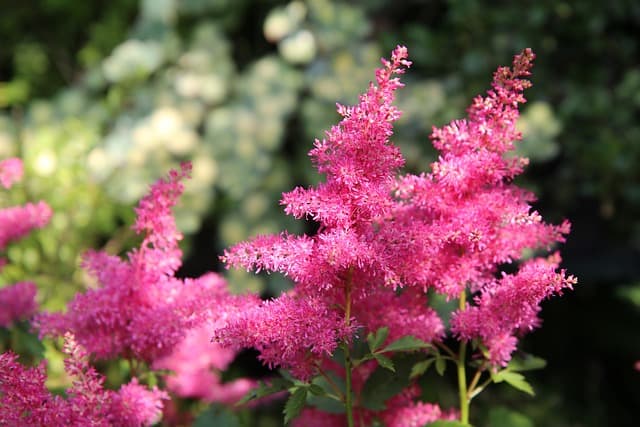
Astilbe plants require proper care and maintenance to thrive and produce healthy blooms. Here are some tips and guidelines for taking care of astilbe plants:
1. Watering
Astilbe plants require consistent moisture to grow well. They prefer moist, well-drained soil and should be watered regularly, especially during hot and dry weather. Overwatering can lead to fungal diseases, so it’s important to avoid waterlogging the soil.
2. Fertilizing
Astilbe plants benefit from regular fertilization to promote healthy growth and blooming. A balanced fertilizer with equal amounts of nitrogen, phosphorus, and potassium can be applied in spring and mid-summer. Be sure to follow the manufacturer’s instructions for best results.
3. Mulching
Mulching around astilbe plants can help retain moisture in the soil and suppress weed growth. A layer of organic mulch, such as shredded leaves or bark, can be applied around the base of the plant, taking care not to cover the crown.
4. Transplanting
Astilbe plants can be transplanted in early spring or fall when they are dormant. It’s important to dig up the entire root ball and replant it at the same depth in a new location. Water the plant thoroughly after transplanting to help it establish in its new location.
5. Soil pH
Astilbe plants prefer slightly acidic soil with a pH between 5.5 and 6.5. If the soil is too alkaline, the plants may suffer from nutrient deficiencies. A soil test can help determine the pH of the soil and whether any amendments are needed.
6. Deadheading
Removing spent flowers from astilbe plants can help promote additional blooming and prevent the plant from self-seeding. Cut back the flower stalks to the base of the plant after blooming is complete.
7. Soil Line
Astilbe plants should be planted at the same depth they were growing in their previous location. The crown of the plant should be level with the soil line, and the roots should be covered with soil.
8. Containers
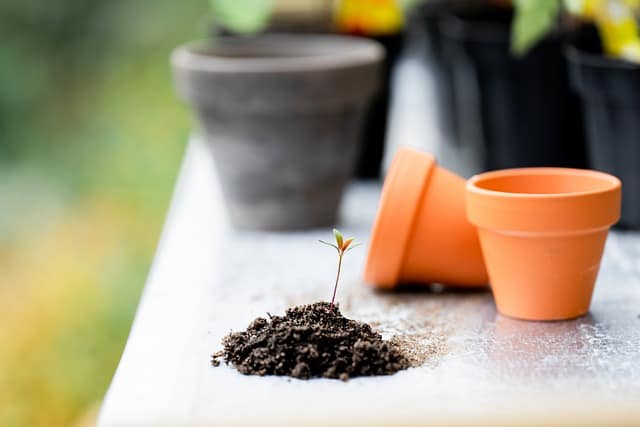
Astilbe plants can be grown in containers as long as they have adequate drainage and are watered regularly. Choose a container that is at least 12 inches deep and wide and fill it with a well-draining potting mix.
9. Division
Astilbe plants can be divided every 3-4 years to promote healthy growth and blooming. Dig up the entire root ball and carefully separate the plant into smaller sections, making sure each section has at least one healthy shoot and root system.
10. Acidic
Astilbe plants prefer slightly acidic soil with a pH between 5.5 and 6.5. If the soil is too alkaline, the plants may suffer from nutrient deficiencies. Adding elemental sulfur or peat moss can help lower the pH of the soil.
11. Pruning
Astilbe plants require minimal pruning, but dead or damaged foliage can be removed in early spring before new growth appears. Cut back the entire plant to the ground in late fall after the foliage has died back.
12. Winter Care
Astilbe plants are hardy perennials that can tolerate cold winter temperatures. However, a layer of mulch can be applied around the base of the plant to help protect the roots from freezing. Cut back the foliage to the ground in late fall after it has died back.
13. Perlite
Perlite can be added to the soil mix when planting astilbe plants in containers to improve drainage and aeration. A mix of equal parts perlite, peat moss, and vermiculite can be used as a potting mix for astilbe plants.
Astilbe Propagation

Astilbe is a perennial plant that can be propagated by seed or crown division. Propagation is the process of creating new plants from existing ones.
Seed Propagation
Astilbe seeds can be collected from the dried flower heads in the fall. The seeds should be sown in a seed tray or pot filled with a well-draining potting mix. The seeds should be covered with a thin layer of soil and kept moist. The tray or pot should be placed in a warm, bright location, but not in direct sunlight.
The seeds will germinate in 2-4 weeks. Once the seedlings have developed two true leaves, they can be transplanted into individual pots and grown on until they are large enough to be planted outside.
Crown Division
Astilbe can also be propagated by crown division. This is the process of separating the plant into smaller sections, each with its own roots and shoots. Crown division is best done in the spring or fall when the plant is dormant.
To divide the plant, carefully dig up the clump and shake off any excess soil. Use a sharp knife or garden spade to separate the plant into smaller sections, making sure that each section has a healthy root system and at least one shoot. Replant the sections in a well-draining potting mix or in the garden.
Astilbe Propagation Methods
Both seed propagation and crown division are effective methods of propagating astilbe. Seed propagation is a more time-consuming process, but it allows for the creation of many new plants from a single seed head. Crown division is a quicker process, but it requires an existing plant to be divided.
In summary, astilbe can be propagated by seed or crown division. Seed propagation requires patience and attention to detail, while crown division requires an existing plant to be divided. Both methods are effective and can be used to create new plants for your garden.
Identifying and Treating Astilbe Diseases
Astilbe is a beautiful perennial flower that can add color and texture to any garden. However, these plants are susceptible to a variety of diseases that can cause them to turn brown and wilt. In this section, we will cover some of the most common diseases that affect astilbe and how to treat them.
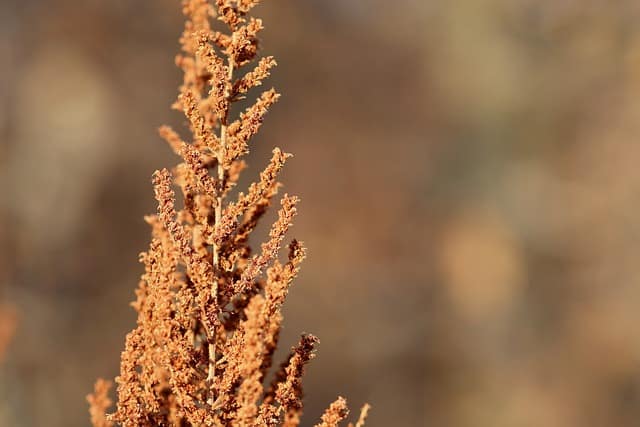
1. Wilt
Wilt is a fungal disease that affects the stems of astilbe plants. It causes sunken brown areas on the lower section of the stem, mostly near the soil line. If left untreated, wilt can cause the plant to die. To treat wilt, remove and destroy the infected specimens. Do not compost them to avoid spreading the disease.
2. Leaf Spot
Leaf spot is a fungal disease that affects the leaves of astilbe plants. It causes brown spots on the leaves that can grow larger over time. To treat leaf spot, remove and destroy the infected leaves. You can also apply a fungicide to prevent the disease from spreading.
3. Four-Lined Plant Bugs
Four-lined plant bugs are pests that feed on astilbe plants. They cause sunken brown spots on the leaves, which can eventually cause the leaves to turn brown and fall off. To treat four-lined plant bugs, you can use pesticides or remove the infested leaves.
4. Powdery Mildew
Powdery mildew is a fungal disease that affects the leaves of astilbe plants. It causes a white, powdery coating to form on the leaves, which can eventually cause the leaves to turn brown and fall off. To treat powdery mildew, remove and destroy the infected leaves. You can also apply a fungicide to prevent the disease from spreading.
5. Foliar Nematode
Foliar nematodes are microscopic worms that feed on the leaves of astilbe plants. They cause brown spots on the leaves, which can eventually cause the leaves to turn brown and fall off. To treat foliar nematodes, remove and destroy the infected leaves. You can also apply a pesticide to prevent the nematodes from spreading.
Astilbe Varieties and Their Characteristics

Astilbe is a genus of about 18 species of rhizomatous perennials that are native to Asia and North America. These plants are known for their feathery flower spikes that bloom in shades of pink, red, white, and purple. There are many cultivars of astilbe available, each with its own unique characteristics.
One popular variety is ‘Fanal’, which has deep red flowers that bloom in mid-summer and grow up to 24 inches tall. Another variety is ‘Bridal Veil’, which has white flowers that bloom in early summer and grow up to 36 inches tall. ‘Peach Blossom’ is a pink variety that blooms in mid-summer and grows up to 24 inches tall.
Astilbe flowers can also be dried and used in floral arrangements. The dried flowers retain their color and shape, making them a popular choice for crafts and decorations.
When selecting an astilbe variety, it is important to consider its hardiness and flower shape. Some varieties, such as ‘Amethyst’ and ‘Purple Candles’, have dense, clustered flowers, while others, like ‘Sprite’ and ‘Younique Salmon’, have more open flower clusters.
Astilbe plants also have unique leaf shapes, which can range from deeply lobed to finely dissected. The feathery foliage provides a nice contrast to other plants in the garden and can add texture and interest to any landscape.
Dealing with Astilbe Pests
Astilbe plants are susceptible to a variety of pests that can cause them to turn brown. Here are some common pests that can affect astilbe plants:
1. Four-Lined Plant Bug
Four-lined plant bugs are common pests that feed on astilbe plants, causing sunken brown spots on the leaves. These bugs are typically active from late May to early July. To prevent infestation, gardeners can spray their plants with insecticidal soap or neem oil.
Additionally, removing weeds and keeping the area around the plants clean can help prevent these pests from taking hold.
2. Disturbed Roots
Disturbed roots can also cause astilbe plants to turn brown. This can happen if the plants are transplanted or if they are planted in soil that has been recently disturbed. To prevent this from happening, gardeners should take care when transplanting their astilbe plants and avoid planting them in areas where the soil has been recently disturbed.
3. Lack of Airflow
A lack of airflow around astilbe plants can also cause them to turn brown. This can happen if the plants are planted too closely together or if they are planted in an area with poor ventilation. To prevent this from happening, gardeners should space their plants out properly and avoid planting them in areas with poor ventilation.
4. Insects
Insects such as aphids can also cause astilbe plants to turn brown. These pests feed on the sap of the plants, causing them to wilt and turn brown. To prevent infestation, gardeners can spray their plants with insecticidal soap or neem oil. Additionally, removing weeds and keeping the area around the plants clean can help prevent these pests from taking hold.
Companion Planting with Astilbe
Astilbe is a beautiful flowering plant that can add a splash of color to any garden. However, once it’s done blooming, the plant will wither and brown and won’t blossom again, even with deadheading. Since it’s a perennial, though, you can’t just pull it out! That’s where companion planting comes in.
Planting companion plants for astilbe that will overshadow it with impressive new flowers when it starts to die back is a great way to keep your garden looking beautiful all season long. Here are some ideas for astilbe companion plants:
1. Hostas
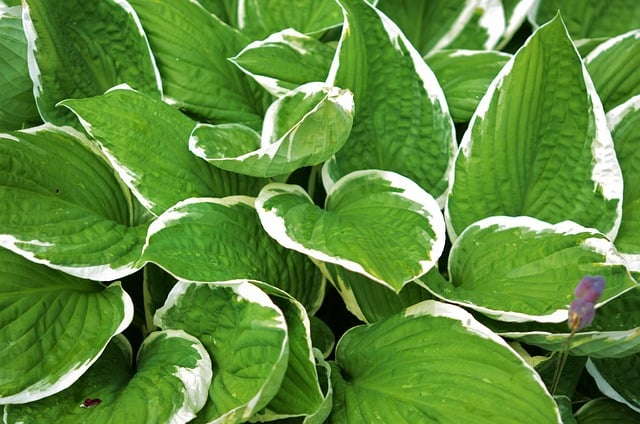
Hostas are a perfect companion plant for astilbe because they thrive in the same conditions. Both plants prefer partial to full shade and moist, well-drained soil. Hostas also come in a variety of colors and textures, so they can add some interesting contrast to your garden.
2. Ferns
Ferns are another great companion plant for astilbe because they also prefer shady, moist conditions. They come in a variety of sizes and textures, from delicate maidenhair ferns to large, dramatic ostrich ferns. They also add some interesting visual interest to your garden.
3. Bleeding Hearts
Bleeding hearts are a classic companion plant for astilbe because they bloom at the same time and in the same conditions. They prefer partial to full shade and moist, well-drained soil. They also add some interesting color contrast to your garden with their pink or white heart-shaped flowers.
4. Coral Bells
Coral bells are a great companion plant for astilbe because they also prefer partial to full shade and moist, well-drained soil. They come in a variety of colors and textures, from bright green to deep purple. They also add some interesting foliage contrast to your garden.
5. Japanese Painted Ferns
Japanese painted ferns are a unique companion plant for astilbe because they add some interesting color contrast to your garden. They prefer partial to full shade and moist, well-drained soil. They have a beautiful silver and purple coloration that can really make your garden pop.
Astilbe in Containers and Landscaping
Astilbe is a versatile plant that can be grown in containers or in landscaping. It is a popular choice for gardeners who want to add color and texture to their gardens. Astilbe is a low-maintenance plant that requires minimal care and can thrive in a variety of growing conditions.
Containers
Astilbe can be grown in containers, making it an ideal choice for gardeners who have limited space or want to add color to their patios or balconies. When planting astilbe in containers, it is important to choose a container that is large enough to accommodate the plant’s root system.
A container that is too small can cause the plant to become root-bound, which can lead to stunted growth and poor flowering.
When planting astilbe in containers, it is important to use a high-quality potting mix that is well-draining. Astilbe requires moist soil, but it does not like to be waterlogged. It is important to water the plant regularly, but not to overwater it. Overwatering can lead to root rot, which can be fatal to the plant.
Landscaping
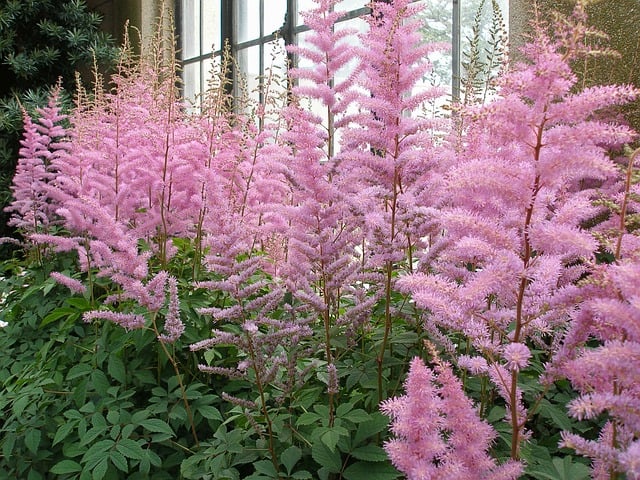
Astilbe is a popular choice for landscaping because of its colorful flowers and feathery foliage. It is a low-maintenance plant that can thrive in a variety of growing conditions. Astilbe prefers partial shade to full shade and moist, well-draining soil. It is important to choose a location that is protected from the hot afternoon sun.
When planting astilbe in landscaping, it is important to prepare the soil properly. Astilbe prefers soil that is rich in organic matter and well-draining. It is important to amend the soil with compost or other organic matter before planting. Astilbe should be planted in the spring or fall, when the soil is moist and cool.
In conclusion, astilbe is a versatile plant that can be grown in containers or in landscaping. It is a low-maintenance plant that requires minimal care and can thrive in a variety of growing conditions.
When planting astilbe, it is important to choose a location that is protected from the hot afternoon sun and to prepare the soil properly. With proper care, astilbe can provide color and texture to any garden or landscape.
Frequently Asked Questions
Why is my astilbe wilting?
Astilbe plants require moist soil to thrive. Wilting is a sign that the plant is not getting enough water. Check the soil moisture level by sticking your finger into the soil about an inch deep. If the soil feels dry, water the plant deeply and regularly. If the soil remains too dry, the astilbe may continue to wilt and eventually die.
What are some common astilbe diseases?
Astilbe plants are susceptible to fungal diseases like powdery mildew and rust. Powdery mildew appears as a white powder on the leaves, while rust appears as orange or brown spots. These diseases can weaken the plant and cause it to turn brown. To prevent fungal diseases, avoid overhead watering and overcrowding plants.
Why are my astilbe leaves curling?
Curling leaves can be a sign of a few different problems. Astilbe plants may curl their leaves in response to heat stress or drought. Insects like aphids and spider mites can also cause leaf curling. Check the soil moisture level and inspect the plant for signs of insect infestation.
What causes astilbe leaf scorch?
Leaf scorch is a condition where the edges of the leaves turn brown and crispy. It can be caused by hot, dry weather or exposure to direct sunlight. To prevent leaf scorch, plant astilbe in a partially shaded area and water the plant regularly during dry spells.
Why isn’t my astilbe coming up?
Astilbe plants may fail to sprout for a few reasons. They may have been planted too deeply, or the soil may be too dry or too compacted. In some cases, the plant may have died over the winter. To encourage your astilbe to sprout, plant it in well-draining soil and keep the soil moist.
Should you cut off dead astilbe flowers?
Deadheading, or removing spent flowers, can help promote new growth and prolong the blooming period. However, if the flowers have turned brown, it may be a sign of a larger problem like a fungal disease or insect infestation. In this case, it is best to remove the entire flower stem to prevent the problem from spreading.

Hey, I’m Lisa and I’ve been an avid gardener for over 30 years. I love writing, talking and living in the garden! Feel free to connect with me on my socials below


